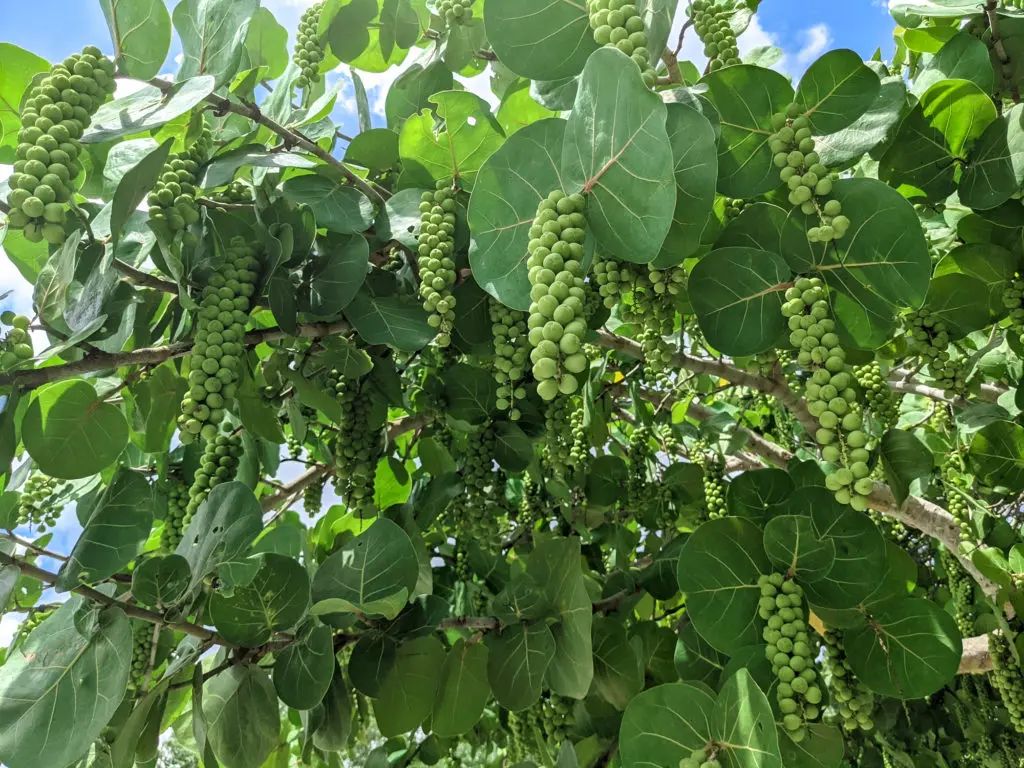by Amanda Rose Newton
Foraging has gained popularity over the past decade, with the growing interest in eating locally and farm-to-table restaurants.
Foods such as mushrooms, fern fiddleheads, and what we think of as weeds have become coveted items for the high-end restaurant menu.
If the prospect of selecting and eating plants found on afternoon hikes is a little above and beyond where you want to go, there are plenty of edibles easily grown in your own backyard. In fact, all the species listed here are readily available at most retail garden centers. Just make sure to wash your plant material carefully before consuming it and avoid using pesticides and herbicides.
Cabbage Palm (Sabal Palmetto)
Our state tree happens to hold a tasty secret! If you have jumped on board the hearts of palm trends, it may surprise you to learn they are harvestable from this palm! Since removing the heart kills the tree, it’s recommended that you only harvest when the trees need to be cleared for other purposes. The cabbage palm also produces prolific blooms that bees love. Sabal palmetto honey is a fan favorite and can bring in a high dollar at the Farmer’s market.
Swamp Cabbage Salad: Once the heart is removed, strip it to the core and julienne into slices. Soak the sliced “cabbage” in water for a few hours, drain, and serve as you would a regular salad.
Sea Grape (Cocoloba Uvifera)
The sea grape is ubiquitous to our state, often being the first plant that beachgoers are greeted by on their trek to the sand.
The female plants produce long strands of grapes that go from pale green to deep purple when ripe. Ripe fruit can be consumed just as you would normal grapes! Just rinse and enjoy! Bear in mind that the fruit is much more sour than conventional table grapes from the supermarket.

Sea Grape Jelly: If the fruit is too sour for your liking, you can still use up the fruit by sweetening it into a delicious morning spread. To make sea grape jelly, macerate the grapes and filter the juice through a cheesecloth. Pour 4 cups of the juice into a pot with the addition of 4 cups of sugar. Boil until your thermometer hits about 230°F. At that point, you can pour it into sterilized mason jars to enjoy later.
Spanish Bayonet (Yucca aloifolia)
Impressive to look at and equally delicious to eat, the Spanish bayonet is excellent for adding low-maintenance beauty to any yard. The flowers and fruit are edible, though the fruit on its own is bitter. Your best bet is to batter dip and fry the flowers or use it in a fresh salad.
Baked Yucca: To make the fruit more palatable, harvest it while still green and wrap it tightly in foil like a potato, then bake for about 30 minutes. Serve the way you enjoy your baked potatoes, whether a sprinkle of salt or loaded with cheese and bacon.
Native Mulberry (Morus rubra)
Mulberry trees provide nice shade at a reasonable height that can work in most landscapes. The fruit also happens to be delicious, tasting like a sweet blackberry. The fruit can be consumed right off the tree, but also makes for great wine, jam, flavored vinegar, and of course, pie.
Mulberry Pie: Choose your favorite recipe or purchase a prepared 9-inch pie crust. Using about 4 cups of fresh mulberries, place in a saucepan along with ¼ cup cornstarch (or other thickener), ½ cup sugar, 2 tablespoons lemon or lime juice, and ½ cup water over medium heat. Once the mixture thickens, pour into the pie shell and allow to cool prior to serving.
Beautyberry (Callicarpa Americana)
Beautyberry is the perfect small landscape shrub. Featuring large-leaved green foliage and bright clusters of purple berries, it attracts admirers and wildlife to the yard.

The berries are not just for the birds and are safe to be eaten by humans. However, unless you grew up with them, they may be a touch too sour to eat out of hand. Like the above-mentioned fruits, it’s easy to process the berries into a jam or flavored vinegar. Recent studies from Mississippi State University show beautyberry also holds mosquito-repelling capabilities, making it a fan favorite among many Florida residents.
Beautyberry Mosquito Repellent: Boil leaves and stems of the plant to yield roughly 1.5 cups of liquid. Add in 1 cup of neem oil with 1 ounce of beeswax until melted. Pour mixture slowly into blender and process until it forms a spreadable cream.
Remember, always wash any plant before consuming it and make sure it is the correct part meant for consumption. Many native plants need to be processed or cooked before eating. Ask any of our staff where the edibles are on your next visit. The only thing we love to talk about more than plants is food!


